This article will provide an overview of the basic science of light therapy, including how visible light and the rest of the electromagnetic spectrum affect our biology.
Electromagnetic Spectrum
Visible light is a small band of frequencies within the extensive electromagnetic spectrum, ~400-800 THz (trillion cycles per second) OR ~380-700nm in wavelength.
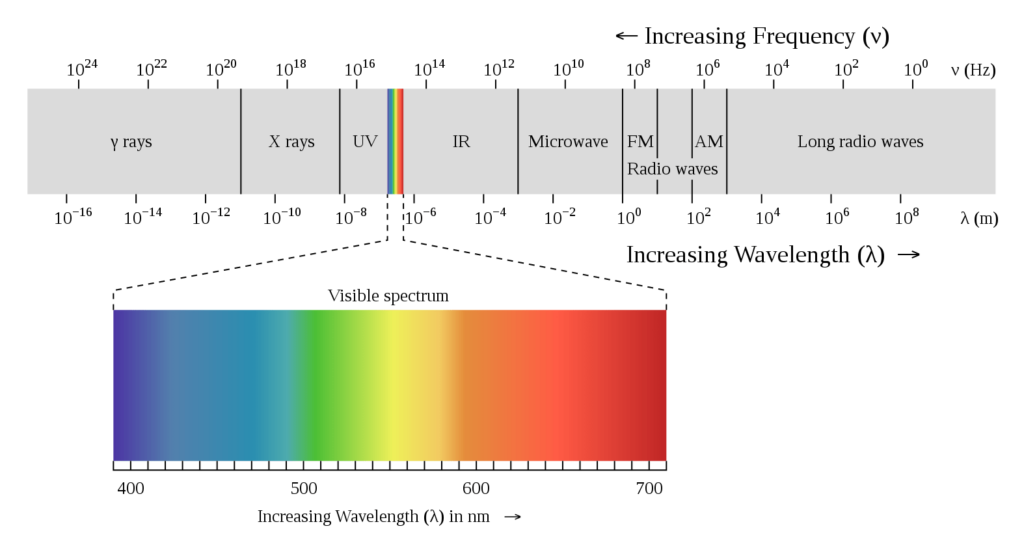
Schumann Resonance
Every living organism on our planet evolved within the natural electromagnetic field (EMF) of the Earth’s magnetosphere. The Schumann Resonance is an extremely low frequency electromagnetic field with a main component oscillating around 7.83 Hz (and including resonant multiples) but fluctuates.
In the absence of access to the Schumann Resonance of the Earth, animals quickly degrade into diseased states.
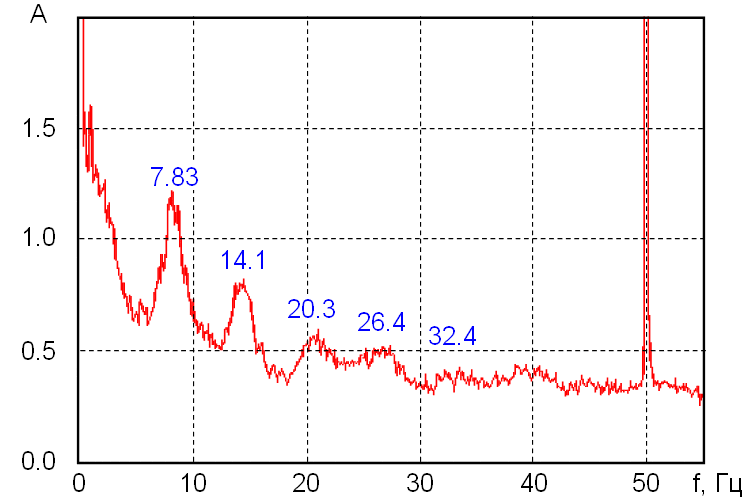
Faraday Cage Experiments
Experiments have been done in cages or rooms that block all surrounding EMFs, including the Earth’s natural EMFs/Schumann Resonance.
Experiments have been done on hamsters:
- Scientists were able to prevent and instigate hibernation.
- When introducing specific frequencies to replicate summer, they incited arousal from hibernation and frantic states in the hamsters.
Human Studies:
- Rütger Wever performed experiments in underground isolation chambers shielded from light and sound with one also shielded from EMFs.
- Subjects in the room shielded from EMFs were measured to have extraordinary variation in sleep cycle and various biological rhythms and suffered from attention deficits, headaches, anxiety, sluggishness, irritability… general malaise (some of these objectively assessed, some subjective).
- However, when frequencies similar to the Earth’s natural frequency were introduced, their issues quickly resolved.
Sunlight
Our exposure to sunlight is the basis for our circadian rhythm which helps control much of our body’s hormonal function and is crucial to our wellbeing.
Melanopsin, your non-visual photoreceptor (light-sensing protein in the retina) responds to blue light and can suppress the production of melatonin. This natural process is what can get interfered with by the use of blue-light heavy screens or lights at night, which can lead to disturbances in our circadian rhythm/sleep cycle and lead to insomnia or other issues.
Cortisol, our daytime hormone linked with alertness and energy levels, is also linked to light exposure and peaks in the morning – with levels running counter to melatonin throughout a 24-hour cycle.
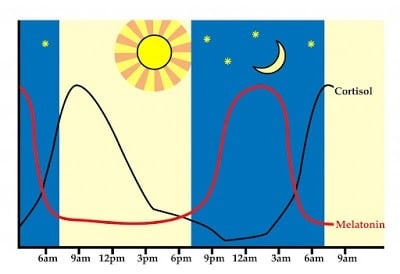
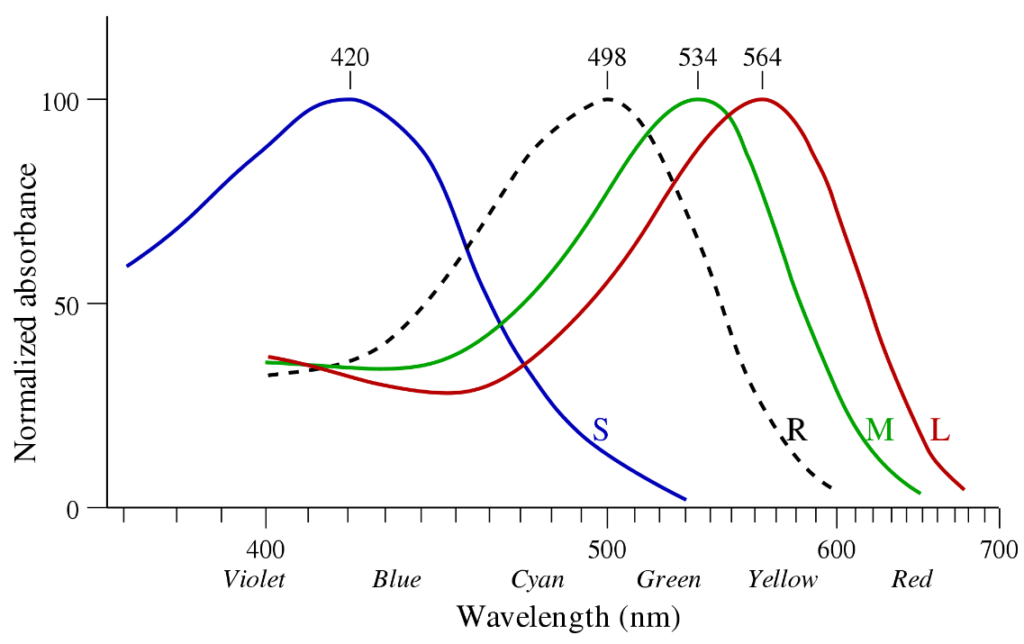
Other Effects from Sunlight
- Melanin can convert sunlight to ionic and electric energy by splitting water dipoles.
- UVB light at 295nm is essential for vitamin D production. This form vitamin D is water soluble (as opposed to D3 supplements, which are transported by LDL) and lasts longer in the system.
- UV light is shown to have some healing properties under the right conditions as well (skin diseases, nitric oxide production, oxidation of cholesterol and sulfur).
Infrared Light
Sunlight has higher concentrations of red and infrared at dawn and dusk because it travels through more of the Earth’s atmosphere. Red and Infrared light in the morning and at night trigger chemical processes for hormones regulating many functions.
Fluorescent lights do not contain the infrared portion of the EM spectrum and often contain harsh and damaging frequencies. Incandescent and halogen lights can be healthier options more similar to the frequencies from the sun.
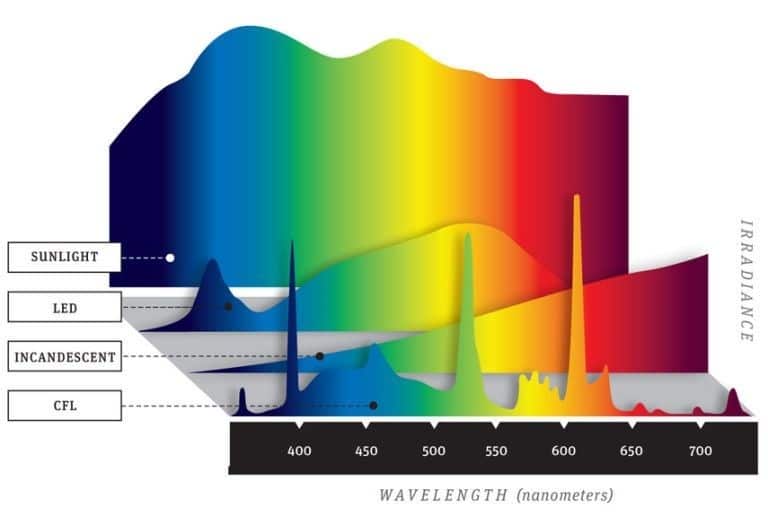
Infrared and other frequencies of light improve cellular energy production & health and through action on an enzyme in mitochondria (photobiomodulation – Tiina Karu).
Water makes up 70% of our bodies by weight and 99% of the molecules in our body. Infrared light can literally charge this biological water.
A great example of this research is by Gerald Pollack (U of Washington).
- Structured water found near hydrophilic surfaces (nearly all biological water) or EZ water absorbs ambient infrared.
- Every cell in the body has a charge created by this water, which helps keeps proper cell spacing and health.
- The structure of the water in the cytoplasm (inside the cell) also helps to guide molecular processes necessary for life.
Stay tuned for Part 2 of the science of light therapy.

great work
Thank you! Honored you enjoyed it.